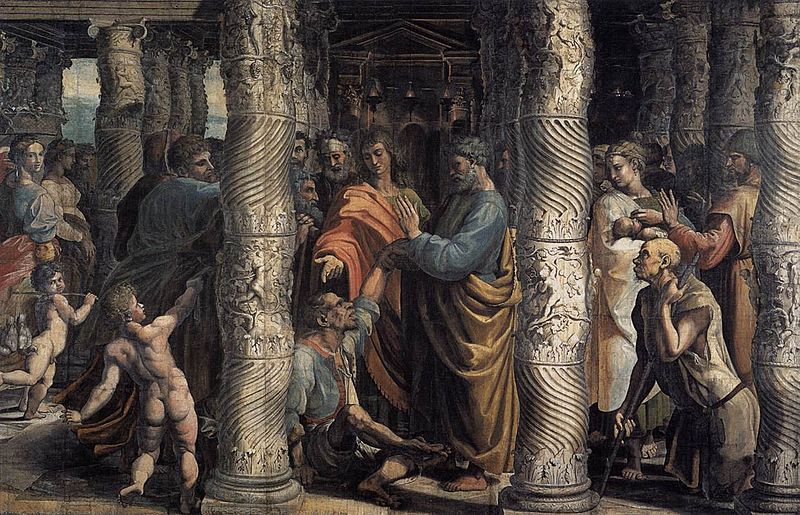SSTEIN Research Proj- Raphael’s Cartoons for the Sistine Chapel Tapestries
Freedberg, Painting of the High Renaissance, Oberhuber, Hall. 269-280
Raphael was the creator of 7 beautiful cartoons. They were created around the time of 1515 for the Sistine Chapel and now reside in the Vatican Museum in Rome. Only five of these beautiful cartoons exist today in the Victoria and Albert Museum in London.
There seems to be little on the preparations and sketches that Raphael prepared for the paintings of the tapestries. Only two drawing have been found of his studies that we know were created by him, other may have been from his assistants. Today not a single piece exists that shows the reflections of Raphael’s inventions in creating an entire tapestry. It is said that it could be possible that Raphael's partial studies for the tapestries was done by assistance under his supervision. These copies that have been found, may have been created by assistants to keep Leonardo’s works form being defaced. Penni was one assistant who helped create these studied with pen and ink also to simplify Leonardo’s work for ease of transfer. Raphael assistant Penni played a major role in helping paint and create the tapestries whereas other assistance helped with creating the designs for the borders.
The tapestries can be viewed from both the front and reverse because of the nature of the medium. They seem to be more of an invention rather than an aesthetic attribute. The reversal of the tapestries has an effect with the designs that are directional. There is a better fluidity to the pieces when flipped. Raphael worked in a counter gestalt when creating the tapestries. Which is basically in a reverse of the original idea. When the tapestries is reversed from its original gestalt it is only so little weakened.
The Paul and the Peter tapestries were originally placed in an architectural setting that would show the reticence aesthetic and practical use in lighting. Each tapestry would receive the proper angle and amount of light. Each tapestry has a unique design, yet each one relates to the next in a sequence. The landscape appears to be have a continuance in both.
On the long walls there is three scenes. The scenes seem to have no correspondence within each other, but each of them is concordant in indication of direction. The Pasce Oves shows movement and narration to the right. The figures in the scene are arranged against the landscape giving a monumental and architectural effect. In the Healing of the Lame, the tapestry has a dense populace of figures creating a strong architectural effect. The design is more central, but a direction to the right is slightly implied. It relaxes the viewer to the right. The last tapestry is the Death of the Ananias is the lost stable in it structure. It emphasizes the direction like the others, but also counteracts direction. It is directed in reverse the other to the left. This creates a beautifully constructed balance of the three tapestries.


This comment has been removed by the author.
ReplyDeleteShae, please revise (if you can!) this statement so as to remove the many mistaken references to "Leonardo" whereas you mean to say "Raphael." Also I note that the cartoons are today NOT in the Vatican, but in the Victoria and
ReplyDeleteAlbert Museum in London. I hope to see you continue this interesting work with discussions of the individual cartoons; see the amazing informative site I just found from the V and A:http://www.vam.ac.uk/page/r/raphael-cartoons/